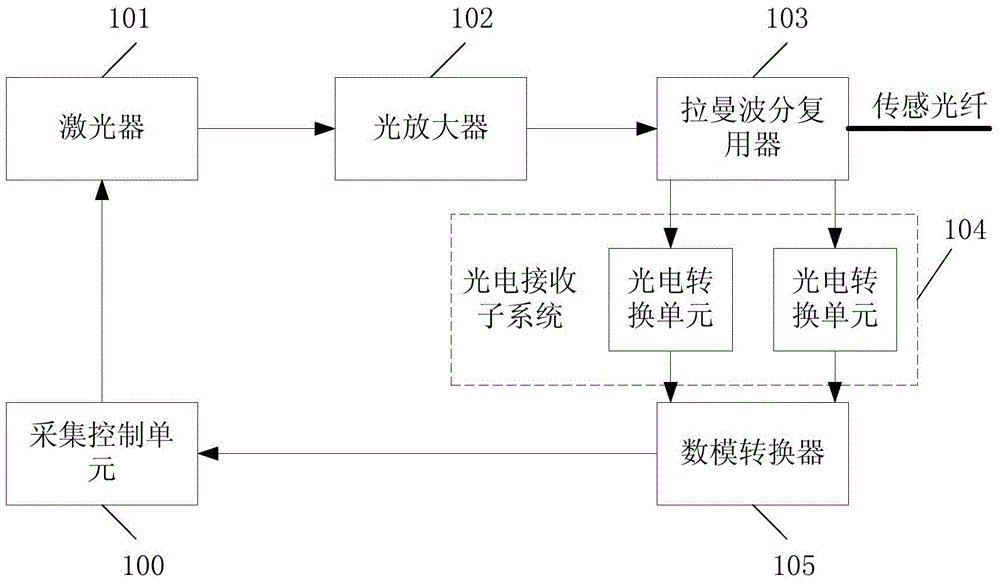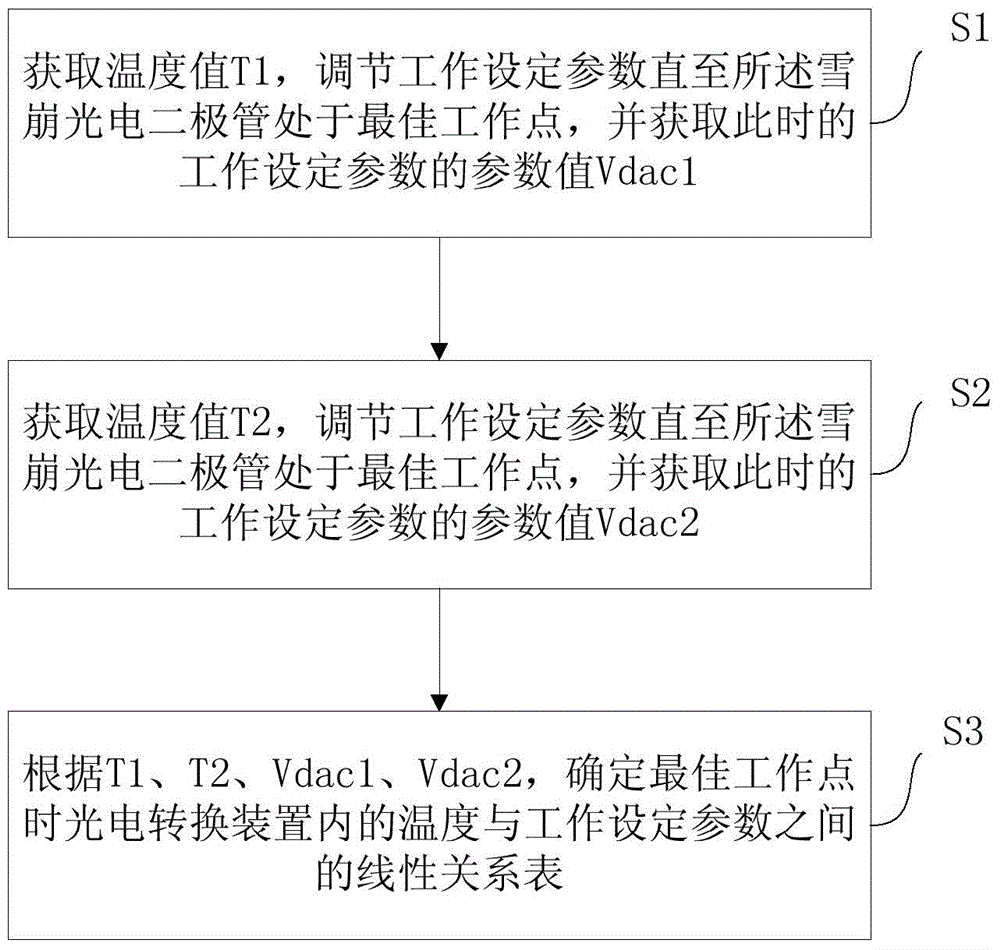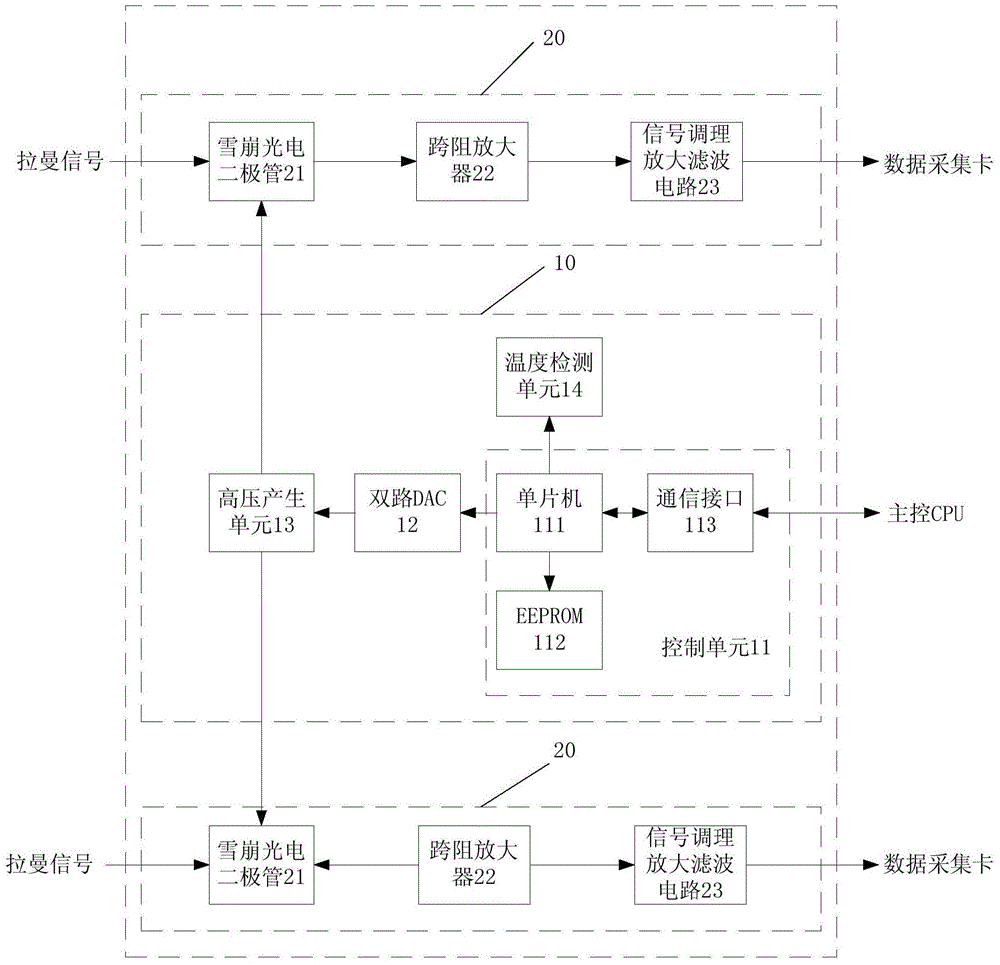Photoelectric conversion module, temperature compensation method for photoelectric conversion module, and distributed light sensing system
A photoelectric conversion module, temperature compensation technology, applied in thermometers, thermometer testing/calibration, thermometers with physical/chemical changes, etc., can solve problems such as low concentration, affecting equipment use and reliability, and system instability, etc. Achieve the effect of improving stability, avoiding potential instability, and facilitating integrated management
- Summary
- Abstract
- Description
- Claims
- Application Information
AI Technical Summary
Problems solved by technology
Method used
Image
Examples
Embodiment Construction
[0028] In order to have a clearer understanding of the technical features, purposes and effects of the present invention, the specific implementation manners of the present invention will now be described in detail with reference to the accompanying drawings.
[0029] Firstly, the function of the photoelectric conversion module of the present invention is introduced by taking the distributed optical fiber temperature measurement system as an example. Although the application of the photoelectric conversion module is not limited to the distributed optical fiber temperature measurement system, it is still applicable to many other types of distributed optical fiber sensing systems. , but as a typical application of this subsystem, the application of this system in a distributed optical fiber temperature measurement system will be taken as an example below to illustrate. refer to figure 1 , the working process is as follows: when the acquisition starts, the acquisition control uni...
PUM
 Login to View More
Login to View More Abstract
Description
Claims
Application Information
 Login to View More
Login to View More - R&D
- Intellectual Property
- Life Sciences
- Materials
- Tech Scout
- Unparalleled Data Quality
- Higher Quality Content
- 60% Fewer Hallucinations
Browse by: Latest US Patents, China's latest patents, Technical Efficacy Thesaurus, Application Domain, Technology Topic, Popular Technical Reports.
© 2025 PatSnap. All rights reserved.Legal|Privacy policy|Modern Slavery Act Transparency Statement|Sitemap|About US| Contact US: help@patsnap.com



